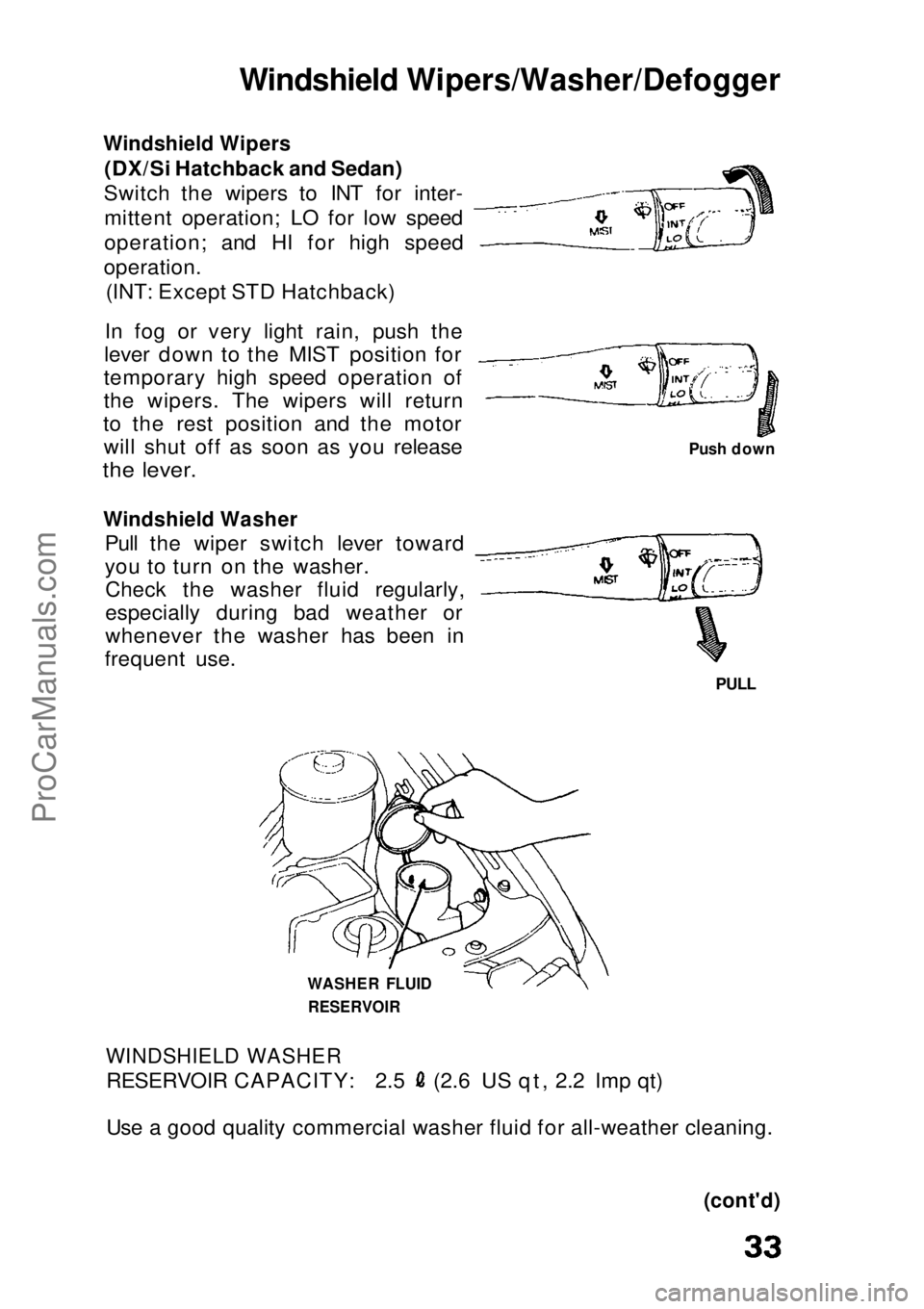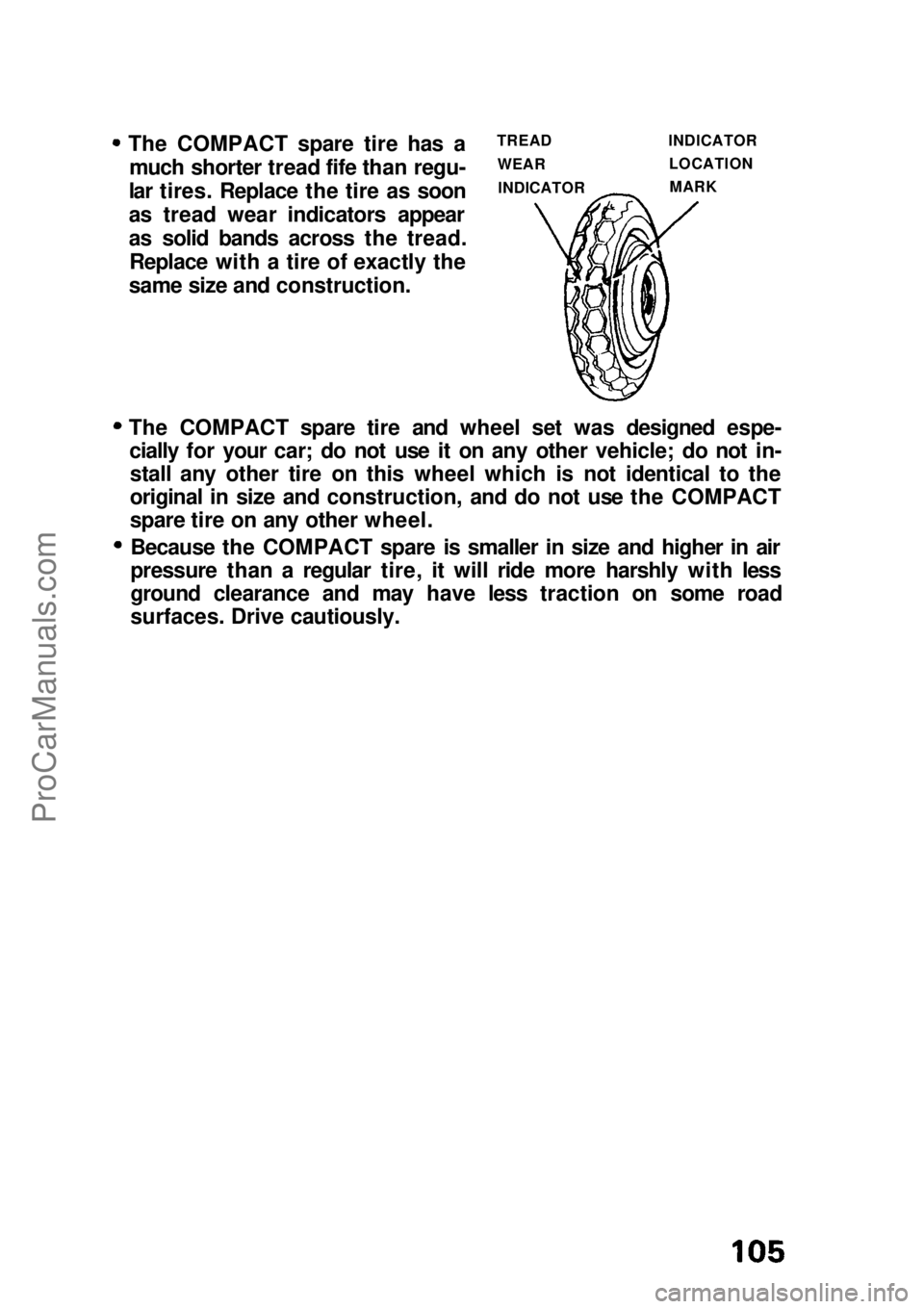1991 HONDA CIVIC ESP
[x] Cancel search: ESPPage 12 of 136
![HONDA CIVIC 1991 Owners Manual [Sedan]
Wearing the Front Seat Belts
The front seats have automatic ("passive") restraint systems consisting of shoulder belts and knee bolsters. For your safety, the manual lap belts must be HONDA CIVIC 1991 Owners Manual [Sedan]
Wearing the Front Seat Belts
The front seats have automatic ("passive") restraint systems consisting of shoulder belts and knee bolsters. For your safety, the manual lap belts must be](/manual-img/13/57901/w960_57901-11.png)
[Sedan]
Wearing the Front Seat Belts
The front seats have automatic ("passive") restraint systems consisting of shoulder belts and knee bolsters. For your safety, the manual lap belts must be worn together with the automatic
shoulder belts. The shoulder belts must remain permanently latched.
The automatic and manual belts have emergency locking retractors
designed to lock only during a sudden stop or impact. Otherwise,
they allow some freedom of movement in the seat.
Operation
1.Enter the car and close the door
completely. Move the seat a
comfortable distance from the
steering wheel, sit straight up and
well back in the seat.
Never drive the car with the doors
ajar. The front doors must be
closed completely for the front
seat belts to function properly.
2. Turn the ignition ON. The shoulder belt buckle will move to its rear locked position. The length of the shoulder belt will adjust
automatically to your body and seating position.
Make sure the shoulder belt goes over your shoulder and across
your body to evenly distribute the belt's restraining force.
If the belt is too near your neck and throat, move toward the
center of the seat.
Normal movement of the shoulder belt buckle may cause injury. Be sure all parts of your body, especially fingers and hands, are
clear of the shoulder buckle while it is moving.
(cont'd)ProCarManuals.comMain Menu s t
Page 29 of 136

Speedometer
The speed is indicated in miles per hour (outside scale) and kilometers per hour (inside).
Odometer
The numbers on the odometer indicate miles.
The odometer registers total distance traveled, and serves as your guide for determining when periodic maintenance is due. Federal lawmakes it illegal to alter the odometer of any motor vehicle with the
intent to change the number of miles indicated.
Trip Meter The numbers on the trip meter indicate miles.
The trip meter can be returned to zero by pushing in the reset button. Use it for checking fuel consumption or distance traveled
per trip.
Tachometer (Si Hatchback and LX/EX Sedan) The tachometer indicates engine speed in revolutions per minute.
The beginning of the RED ZONE indicates the maximum allowableengine R.P.M. Do not run the engine with the tachometer indicator
needle in the RED ZONE.
Fuel Gauge
FUEL TANK CAPACITY: 45 (11.9 US gal ,9.9 Imp gal)
As a convenience, the gauge continues to show the same fuel level
as when the ignition was last on. After refueling, the gauge will
slowly change to the new fuel level when the ignition is switched on.
When the needle first indicates E (empty), you have a usable
reserve left in the tank of about:
4 (1.1 US gal, 0.9 Imp gal)
Coolant Temperature Gauge
CAUTION:
The needle should stay within the white range. If the needle reaches the red line at "H" (Hot), pull safely off the road, stop theengine and check the coolant level in the reserve tank on the
driver's side of the radiator under the hood.
Do not remove the radiator cap when the engine is hot. The
coolant is under pressure and may blow out and scald you.
GaugesProCarManuals.comMain Menu s t
Page 34 of 136

Windshield Wipers/Washer/Defogger
Windshield Wipers
(DX/Si Hatchback and Sedan)
Switch the wipers to INT for inter- mittent operation; LO for low speed
operation; and HI for high speed
operation. (INT: Except STD Hatchback)
In fog or very light rain, push the
lever down to the MIST position for
temporary high speed operation of
the wipers. The wipers will return
to the rest position and the motor will shut off as soon as you release
the lever.
Windshield Washer
Pull the wiper switch lever toward
you to turn on the washer.Check the washer fluid regularly,
especially during bad weather or
whenever the washer has been in
frequent use.
PULL
WASHER FLUID RESERVOIR
WINDSHIELD WASHER
RESERVOIR CAPACITY: 2.5 (2.6 US qt, 2.2 Imp qt)
Use a good quality commercial washer fluid for all-weather cleaning.
(cont'd)
Push downProCarManuals.comMain Menu s t
Page 41 of 136

Cruise Control (cont'd)
To Change the Set Speed: To a faster speed — For gradual acceleration with your foot off the
accelerator, push and hold the RESUME switch until you reach the
desired speed; release the switch and the system's memory will bere-programmed to the new speed.
For faster acceleration, push the accelerator until you reach the
desired speed, then push and release the SET switch to re-program
the system.
To a slower speed — push and hold the SET switch and the car will coast; when you reach the desired slower speed, release the switch
and the system will be re-programmed.
For temporary acceleration above the set speed, such as for passing,
use the accelerator pedal conventionally. When you want to return
to the set speed, take your foot off the accelerator and coast without applying the brakes.
The Cruise Control automates the function of the accelerator pedal to maintain your car at a constant speed. This can be a
convenience on long trips, but it can also be a danger if there aremany other cars on the road or if the road is unfamiliar. Pay strict
attention to the responsibility of driving whenever using the Cruise Control.
CAUTION:
Because the Cruise Control directly activates the acceleratorpedal, don't rest your foot under the pedal when the Cruise
Control is on; it may pull the pedal down onto your foot.
NOTE:
With Cruise Control on, your speed will still vary slightly,
particularly when going up or down hills. Do not drive with your foot on the brake or clutch pedal (manual
transmission), as this will cause the Cruise Control to disengage.ProCarManuals.comMain Menu s t
Page 101 of 136

Waxing
Wax the car when water will no longer "bead" on the paint.Always wash and dry the car before you wax it.Use a good quality liquid or paste wax, and follow the manufacturer's
instructions. Wax all the metal trim to keep its luster.
NOTE:
Removing oil, tar, etc., with a spot remover will usually strip the
wax from the surrounding finish. Be sure to re-wax these areas
even if the rest of the car does not yet need waxing.
Rust PreventionRusting is likely to occur in parts of the car where water is trapped
or where there is continual dampness.
Water will collect inside doors and body panels if drain holes
become clogged.
Water which seeps under or soaks floor mats will subject floor
sections to prolonged wetness or dampness.Road dirt or sand, which collects and fills recesses on the
underside of the car, retains moisture long after the rest of the
car has dried.
The removal of paint and undercoating by stones, gravel, and minor accidents immediately exposes metal to air and moisture. Rusting is increased by high humidity and by the presence of
corrosive substances in the air or on the roads. Sart used for road de-icing will coat the bottom of the car and
hasten rusting. Localities with high humidity have greater potential for rust
problems, especially where salt is also present on the road or in
moist sea air.
Industrial pollution will accelerate the deterioration of paint
finishes and promote rusting.
(cont'd)ProCarManuals.comMain Menu s t
Page 105 of 136

The COMPACT spare tire has a
much shorter tread fife than regu-
lar tires. Replace the tire as soon
as tread wear indicators appear
as solid bands across the tread. Replace with a tire of exactly the
same size and construction. TREAD
WEARINDICATOR INDICATOR
LOCATIONMARK
The COMPACT spare tire and wheel set was designed espe- cially for your car; do not use it on any other vehicle; do not in-stall any other tire on this wheel which is not identical to the
original in size and construction, and do not use the COMPACT
spare tire on any other wheel.
Because the COMPACT spare is smaller in size and higher in air
pressure than a regular tire, it will ride more harshly with less
ground clearance and may have less traction on some road
surfaces. Drive cautiously.ProCarManuals.comMain Menu s t
Page 123 of 136

Temperature
The temperature grades are A (the highest), B and C representing
the tire's resistance to the generation of heat and its ability to
dissipate heat when tested under controlled conditions on a
specified indoor laboratory test wheel. Sustained high temperaturecan cause the material of the tire to degenerate and reduce tire life,
and excessive temperature can lead to sudden tire failure. The grade C corresponds to a level of performance which all passenger car
tires must meet under the Federal Motor Vehicle Safety Standard No. 109. Grades B and A represent higher levels of performance on
the laboratory test wheel than the minimum required by law.
The tire temperature grade is established for a tire that is properly inflated and not overloaded. Excessive speed, underinflation, or
excessive loading, either separately or in combination, can cause
heat buildup and possible tire failure.ProCarManuals.comMain Menu s t